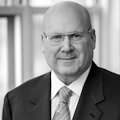The opportunity to witness the beginning of a pioneering development in technology is rarely encountered.1 Nanodentistry, the application of nanotechnology to dentistry, will have a monumental impact on our profession.
Nanotechnology is the branch of technology that deals with infinitesimally small objects. To better understand what that means, there are 25,400,000 nanometers in an inch. A nanometer is one billionth of a meter. A human hair is 100,000 nanometers in diameter. It’s about the smallest object that can be seen through a light microscope.
Nanotechnology involves inventing materials, devices, and systems with physical, chemical, and biological properties that differ from those of large-scale structures.2
Dental research is in the process of investigating the use of nanopharmaceuticals to:
• improve the effectiveness of endodontic therapy,
• integrate into dental implants to enhance osteoblast adhesion, and
• more effectively treat periodontal disease.
The future will include the use of nanoparticles in applications such as:
• developing screws for bone fixation,
• direct pulp-capping procedures,
• enhanced bone regeneration, and
• producing artificial mucosa!
Some companies are already using nanoparticles in dental products. Nanofill composites have been available in dentistry for more than a decade. Patent holders for the use of nanotechnology with composites include Kerr and the University of Maryland in Baltimore.
Nobio from Israel is currently seeking FDA clearance for its antibacterial nanocomposite and bonding material. The company’s nanoparticle will be integrated into composites, bonding agents, and potentially other materials to eliminate secondary caries by physically destroying bacteria that contact the surface of the tooth-restoration interface. This technology is noneluting, which means the antimicrobial agent should not lose its effect over time.
Under the umbrella of dental nanorobotics, imagine a once-a-day application of a mouthwash or toothpaste that delivers nanorobotic structures. These mechanical dentifrobots that are nearly invisible will actually be mobile. They move 1–10 microns per second, continually cleaning organic residues from supra- and subgingival surfaces while preventing the accumulation of calculus. These dentifrobots will be able to recognize and destroy pathogenic bacteria in plaque. Their activity can be stopped harmlessly in case they are swallowed.3,4
Nanodentistry can also be used to treat oral cancer. Tiny beads called nanoshells can produce heat through radiation, selectively destroying tumor cells while leaving healthy cells alone.
Ultimately, nanotechnology will have a huge role in nanomedicine and nanodentistry using nanoparticles to prevent, diagnose, and treat disease, and to preserve and improve human health.
So, Star Wars, yes! A reality, yes! Coming to a dental office near you soon. Absolutely, yes!Editor’s note: This column appears bimonthly. Find the April article on dentaleconomics.com. Search “Amazon Business.”
References
1. Ozak ST, Ozkan P. Nanotechnology and dentistry. Eur J Dent. 2013;7(1):145-151.
2. Kong LX, Peng Z, Li SD, Bartold PM. Nanotechnology and its role in the management of periodontal diseases. Periodontal 2000. 2006;40:184-196. doi:10.1111/j.1600-0757.2005.00143.x.
3. Saravana KR, Vijayalakshmi R. Nanotechnology in dentistry. Indian J Dent Res. 2006;17(2):62-65.
4. Freitas RA Jr. Nanodentistry. J Am Dent Assoc. 2000;131(11):1559-1565.
LOU SHUMAN, DMD, CAGS, is the CEO of Cellerant Consulting Group, dentistry’s leading corporate incubator and accelerator. He is a venturer-in-residence at Harvard’s i-Lab, the chairperson of the technology advisory board at WEO Media, a member of the editorial advisory board of Dental Economics, and founder and creator of the Cellerant Best of Class Technology Awards.
About the Author

Lou Shuman, DMD, CAGS
Lou Shuman, DMD, CAGS, is the CEO of Cellerant Consulting Group, dentistry’s leading corporate incubator and accelerator. He is a venturer-in-residence at Harvard’s i-Lab, cofounder of LightForce Orthodontics, a member of the Dental Economics advisory board, and founder of the Cellerant Best of Class Technology Awards. He was selected in 2021 by Global Summits Institute as one of the World’s Top 100 Doctors.
Updated September 20, 2022
